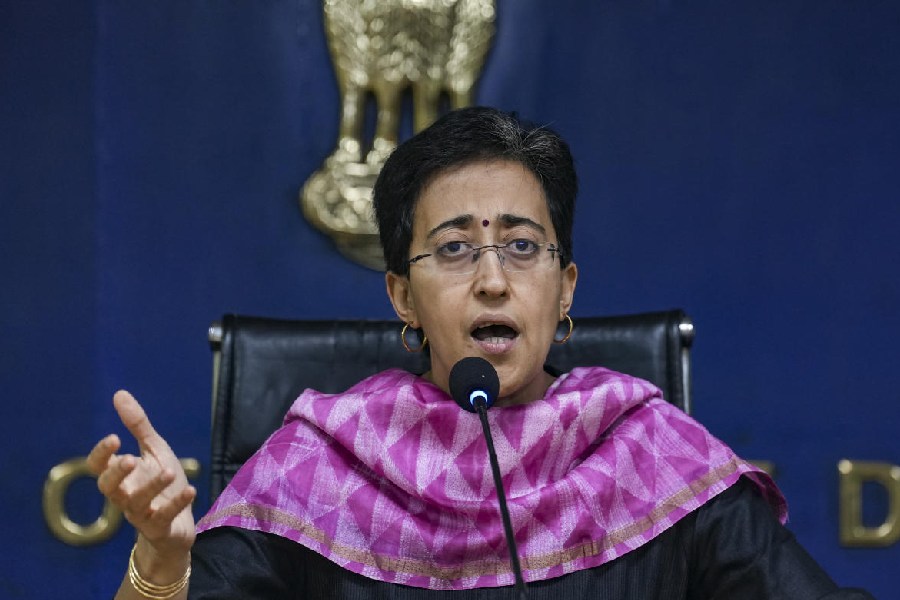K.R. Shyam Sundar is professor of human resources management at Jamshedpur’s XLRI-Xavier School of Management. He has several books on industrial relations and labour economics to his credit. He has also conducted various research projects for the International Labour Organization and the European Union. In an interaction, he spoke about his latest book — Impact of Covid-19, Reforms and Poor Governance on Labour Rights in India. Excerpts:

Professor K.R. Shyam Sundar Sourced by the correspondent
Q: How is Covid-19 affecting jobs and the employment scenario?
A: The supply of labour is getting drastically diminished due to loss of lives in the pandemic. On the other hand, it has spiked unemployment rates not witnessed even during the 2009 financial crisis. Then, workers at the margin — such as those in contract, casual and daily-wage rates — would be easily axed with least prospects of re-employment. All these may lead to loss of income, spending the savings and pawning or selling off of assets among people. And worse, heightened borrowing at usurious interest rates. Most importantly, the emotional and physical well-being of workers — especially those working from home or co-working spaces — would assume serious concern.
Q: How will the pandemic impact fresh recruits in engineering and management?
A: Unless there is a productive interface between engineering colleges and industry, underemployment of engineers would intensify. This will lead to economic inefficiencies as families spend large amounts to educate their children — sometimes taking loans — but these kids don’t get suitable jobs. As a result, family incomes become lower and there is a substantial wastage of family income along with human resources. There has already been some significant churning taking place in the managerial employment preferences such as jobs in consulting and digital sectors. Plant-level jobs are moving towards the banking and financial sector. Human resource would be more likely to perform two functions in tech-driven workspaces, devise measures and strategies to ease the human cost of doing business and restructuring of HR jobs. Employees and workers are also likely to form or join trade unions to demand job security and social safety nets. They’d also focus on employability, reskilling and look for flexi-work schedules, multi-employer employment options like in the gig economy. Finally, the role of industry in the field of education will have to be reinvented to create and sustain a productive interface and enable creation of employable engineering and managerial people. Industry-sponsored educational institutions could be a new and thriving model of education in the future.
Q: Many employees are being forced to work from home (WFH) during the pandemic. Do you think this will be the future of work in the post-pandemic world?
A: In a sense, the pandemic has created a borderless economy blurring divisions between “living” and “work” spaces. While the factory economy drew people out of their homes to far-flung, centralised workplaces, the digital economy is enabling blending of work and home spaces. WFH or hybrid working could appeal to many organisations. However, the adverse aspects of these work arrangements such as fatigue, absence of human network, always on work probabilities and so on could prompt a rethink of workspaces. I have a basic legal problem with WFH. Normally, an employee, irrespective of the status, would enter a “legally authorised workspace” — hence someone cannot simply enter them. However, home as a workspace is taken for granted by the organisation concerned and the employees too. The adverse implications and possible loss of privacy, freedom of activities (especially for the children), crowding of too many digital activities (working spouse online, children online, etc.) in space-constrained cities such as Mumbai, absence of care for the elderly, possible rise in violence and harassment at home by the employees are there. These apart, productivity of employees could possibly be an “inverted U”, primarily due to fatigue and lack of human relations element. However, there are some compelling positive aspects of WFH — for instance, less burden on public transportation, traffic decongestion and reallocation of real estate. I would not recommend this option mainly because work cannot and should not intrude and crowd out non-work aspects and eventual co-opting of actors like family members into legal workspaces.
Q: Don’t you think the future scenario will encourage a “hire and fire” culture?
A: Covid-19 has shown the darker side of even the regular employment contracts, that is, the prospects of paying workers full or partial compensation — which means “empty outgo” in strict economic rational framework, discounting for the moment the positive human relations and normative elements. So I foresee the following trends in the labour market on the demand side. One, employers are more likely to offer flexible employment contracts, introduce zero-hour contracts on a wider scale, restructure the compensation packages subject to the Wage Code (and its amendments), outsource many internal functions, explore innovative work reorganisation exercises like co-working spaces, hybrid model and so on. The objectives of these exercises are to reduce or weaken trade union influence, weaken collective bargaining in the industrial realms, flexible teams in the HR realms and digital divides amongst employees in the so-called organised sector. Contract workers, fixed-term employment workers, trainees, temps and all forms of flexi-employment contracts will dominate in all the segments of the so-called organised sector. Lifetime employment will be a privilege, even a rare prospect, and this will further balkanise the labour market and create deep economic divides and inequalities having grave social, economic and even political implications. Put simply, no job would be secure in the risk-driven or disruption-driven world of work.
The absence of a comprehensive and easily accessible unemployment allowance system covering both the organised and the unorganised is a major gap in the Social Security Code, as I have argued in my recently published book.
Q: Nowadays many companies, especially in the IT and service sectors, often cut jobs at will. Isn’t there any legal redress for employees who lose jobs?
A: Both the Centre and some states like Tamil Nadu have long ago formally pronounced that the existing labour laws like the Trade Unions Act, 1926, the Industrial Disputes Act, 1947, and the Industrial Employment (Standing Orders) Act, 1946, among others would be applicable to the IT sector. Judicial decisions by industrial tribunals have affirmed this as per suitable applicability of relevant provisions. The legal position remains the same even in the four labour codes. In fact, unions like FITE and NDLF have filed numerous industrial disputes and they are on. Some commentators have dubbed unions as unwelcome for export-oriented and high demand-pressured sectors like IT and knowledge sectors. Employment insecurity in the service sector, like IT, e-commerce and other emerging sectors, has become a greater concern than conventional sectors like mining and manufacturing. Employees must eventually demand trade unions and legal action when the scope for firm or employment mobility is lower and reskilling costs are higher.











